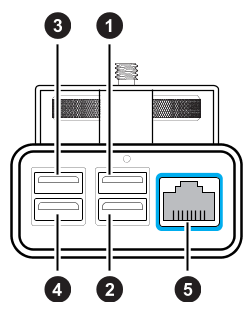-
Introduction
-
Hardware
-
System setup
- Setting up VIVE Mars CamTrack
- Example virtual production studio setup
- Connecting Mars to your PC
- Mounting VIVE Tracker (3.0) to Rover
- Connecting Rover to Mars
- Setting up the base stations
- Tips for setting up the base stations
- Adding Mars as an endpoint in Unreal Engine
- Enabling FreeD on Mars and adding Mars to Aximmetry
- Manually updating the Mars firmware
-
Camera calibration
-
Real-time compositing in Unreal Engine
-
FAQs
- How many base stations can I use?
- Can I use an odd number of base stations?
- Cleaning the base stations
- Can I use more than one VIVE Tracker (3.0)?
- Why does VIVE Tracker (3.0) automatically turn off?
- How do I verify that VIVE Tracker (3.0) is detected?
- What does the status light on VIVE Tracker (3.0) mean?
- Why doesn't the VIVE Tracker (3.0) status icon on the Mars dashboard turn blue?
- Troubleshooting VIVE Tracker (3.0)
- Why can't I see the incoming video feed in the Camera Calibration Tool?
Rover
Rover sends tracking data from
VIVE Tracker (3.0) to
Mars.
Rover collects tracking data from VIVE Tracker (3.0) and relays it to Mars to refresh the signal and prevent signal degradation.

Rover is also responsible for transmitting FIZ (focus, iris, zoom) data that the lens encoder can convert into data that can be used by virtual production engines. VIVE Mars CamTrack supports the LOLED Indiemark lens encoder.

| 1 | USB Type-A port 1 | Primary connection port for VIVE Tracker (3.0) |
| 2 | USB Type-A port 2 | Zoom data can be transmitted through this port |
| 3 | USB Type-A port 3 | Focus data can be transmitted through this port |
| 4 | USB Type-A port 4 | Iris data can be transmitted through this port |
| 5 | Ethernet port | For connecting Rover to Mars to transmit tracking data |
Was this helpful?
Yes
No
Submit
Thank you! Your feedback helps others to see the most helpful information.